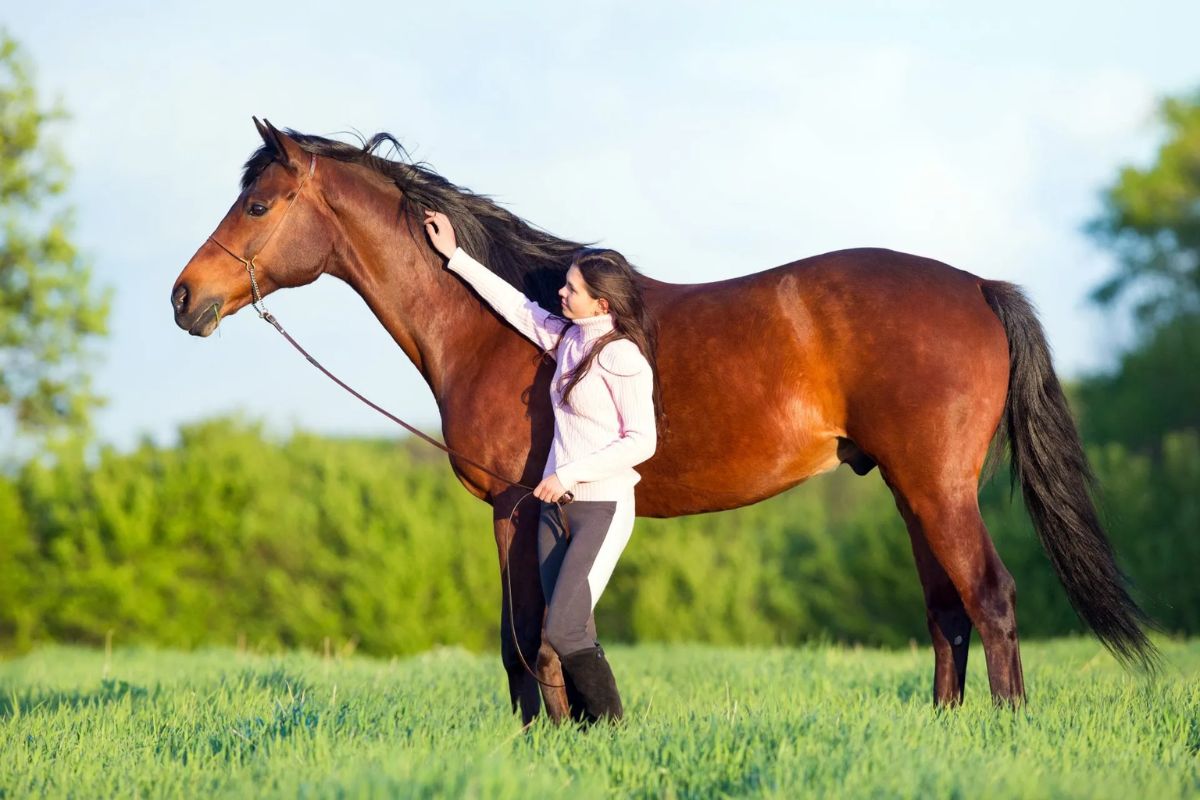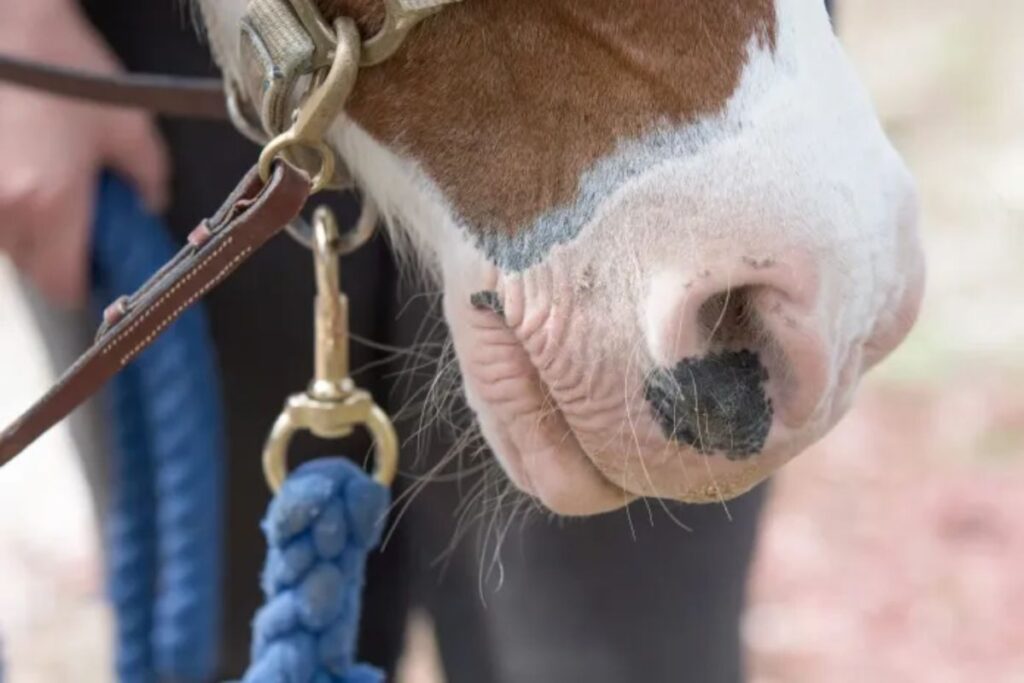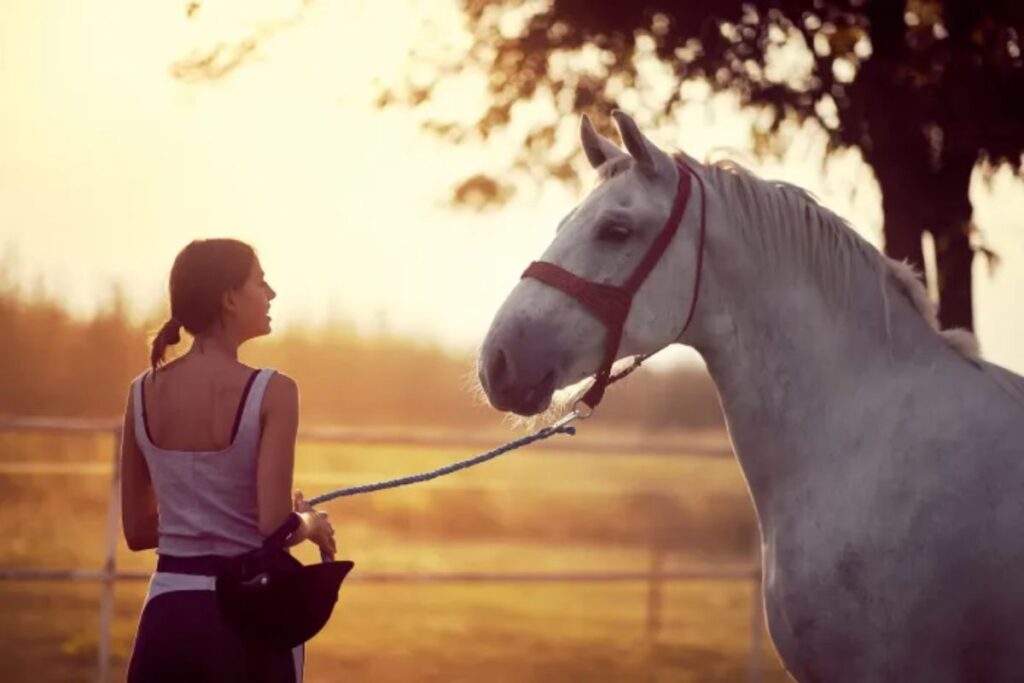Menu

An odd question, you might think... Aren't they the same? Well, they're not. Experiences show there's a significant difference between leading and walking with a horse.
Simply put, leading a horse isn't just leading a horse. Let's clarify the term... leading a horse. Imagine it. You're walking ahead with the horse behind or maybe slightly beside you – which isn't moving as fast as you. You're pulling on the lead rope. Is this the best approach? A slight pressure is fine to send a signal, but leading a horse with a large force is counterproductive. It can put enormous pressure on the nerves in the horse's head and create tension in the neck. It can also stress the horse, causing it to react – perhaps even violently.
The horse might decide to show you what you're doing to it and start pulling you instead. Or it could push you – maybe enough to make you fall. For a younger horse, you leading it from the front could mean it lacks the boundaries it needs. I find that many young horses feel more secure with a person beside them.
Read also: Why do we fall off the horse?

I do so because, in my professional work, I encounter a great many people who walk with their horses or ponies inappropriately. They lead the horse or pony and as a result, experience a series of adverse effects.
I was teaching a 12-year-old girl who, due to an injury, has poor balance. She was leading her pony, which made the pony frustrated. It resulted in the pony not always wanting to move forward, losing focus and becoming more aware of "dangerous things" in the surroundings, it nudged my student, causing her to lose balance, and it often tried to lower its head to eat grass when she was leading it. This made it difficult to walk (lead) with the pony and to perform ground training exercises.
We thus practiced walking with the pony. Inviting the pony to walk with us. The girl used the energy in her body to show the way. Respecting the horse's "space" and demonstrating her own. This made it so much easier to be both a pony and a rider. It was a major eye-opener and at one point the girl said, "I didn't know I was so bad at leading a pony." We later conducted pole exercises, including labyrinths, and the signals had become very nice and soft and the training proceeded without frustration.
Read also: The use of whips: Does it increase speed?
I'm teaching a woman who has a chronic illness, making it difficult for her to breathe. She contacted me because she was having trouble fetching her daughter's pony from the paddock. When she did so, the pony walked so fast that she couldn't keep up because her breathing couldn't keep pace. She became very uneasy, feeling that she couldn't "control" the pony.
When I first taught her, the first thing I noticed was that she held onto the lead rope about 15-20 cm from the carabiner. The pony was highly frustrated with having the person walking practically under its chin and simply tried to alleviate the discomfort by creating more distance. It walked faster – and faster and faster. And my student couldn't keep up at all. We practiced walking with the horse with lots of distance. The result was immediate. The pony walked calmly and relaxed – and my student could keep up with ease, breathing calmly.
A young woman, who I instruct, has a 3-year-old Icelandic horse. When she used to lead it, it would nudge her, almost toppling her, it would snap at her, and often it went its own way. We trained to walk with the horse – the owner began to position herself roughly at the level of its nose with an arm's length distance to the horse and without a tight lead rope. You could almost hear the "Ahhhhhh" coming from the horse – and you could certainly see it. It stopped nudging and now walks politely and relaxed beside its owner. No stress.
Read also: 12 things you can do with your horse – without being in the saddle

Generally, yes - unless there are other challenges too. But it's not necessarily easy or a quick fix. Partly because our (bad) habits are deeply ingrained in us, so we revert to old patterns of behaviour. And partly because both the horse/pony and we need to communicate in a new way. It requires training.
Read also: Basic riding: Teach your horse to use its topline correctly
Sometimes yes, but not necessarily. Some horses work best when you walk beside them. Others are more comfortable with you leading. Some prefer you to walk behind. It can also depend on the situation – whether you're walking from the paddock to the stable, whether you're walking or trotting, or walking around a track...
Try different approaches and figure out what works for you and your horse.
Read also: Groundwork: 8 exercises you can easily and affordably do with your horse
It can be a good idea to have someone watching when you're training to walk with the horse. Because it can be hard to know exactly what you're doing wrong if it's not working.
Good training.
Of course, if a horse or pony behaves inappropriately when we're walking, it could also be due to illness or pain. However, in the examples in this article, we're looking at situations involving a healthy and sound horse. If you suspect something's wrong, it's always recommended to seek help from a vet/therapist.
Camilla Jacobs is behind the company HorseMama, which offers teaching, lectures, and workshops in harmonious horsemanship. Camilla is a trained Horse in Harmony Trainer with Ute Lehmann and is also the author of the children's book "Braveheart Moves In" which is about horsemanship and how it can be used to interact with a horse in a pleasant, harmonious, and safe way.